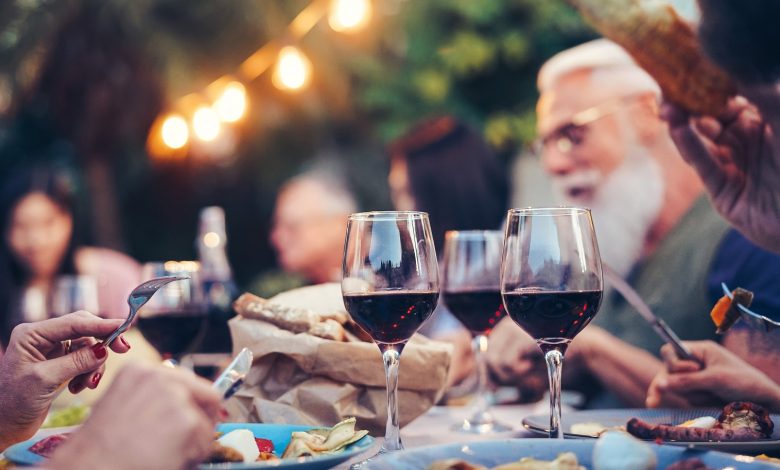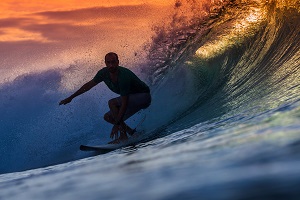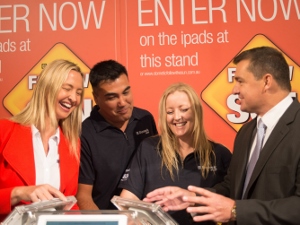
Keep your guests cosy and profits high in winter
What are the best ways to provide warm, enjoyable outdoor facilities all year round?
Winter has arrived bringing cooler days and chilly evenings, but guests still seek al fresco drinking, dining and socialising as part of their experience.
Despite cold weather, the ongoing pandemic still has guests on edge and feeling safer in open spaces.
David Bowen, Head of Hotels, Skye Suites made the point beautifully at the recent Maximum Occupancy event in Sydney when he stated: “In the post-COVID accommodation environment, air is important.”
The aim of any outdoor venue has always been to provide a comfortable, warm, and welcoming environment and it can be a challenge to do it economically. And if the nights are a bit too cool for guests to enjoy the outdoor life, what is the solution?

Nigel Smalls, from SBH Solutions (Infrared Australia) says outdoor heating can be the answer. He agreed that since COVID, it’s more important than ever to provide a pleasant outdoor atmosphere, somewhere guests can maintain distance and minimise chances of infection. He also suggests that using your outdoor space in colder months can increase your revenue.
Most operators want to provide enjoyable and warm outdoor facilities all year round, but what are the best ways to do that?
Nigel told us: “The most prevalent form of outdoor heating in Australia is the gas bottle heater. They are cheap to purchase and mobile, but they also take up valuable floor space, are highly polluting, expensive to run, inconvenient (often running out of gas at the wrong time) and largely ineffective unless you are directly adjacent to them.
“Over time, fixed solutions such as reticulated gas radiant ceramic, tube heaters and electric infrared heaters are replacing gas bottles.”
He went on: “Gas heaters and most electric heaters produce long (known as ‘far’) or medium infrared which are much more effective than a naked gas flame but still mainly heat air, therefore susceptible to wind and exposed positions. Reticulated gas lines, although expensive to install will usually give an attractive and effective solution in a protected outdoor area.
“Standard electric infrared panel heaters are easier to install and are a ‘no light’ solution, but they require relatively high wattage inputs to do anything more than just warm the heads of patrons sitting below. Their effectiveness is very limited in an unprotected position.
“Most recently, shortwave infrared heaters are being adopted in Australia from Europe and are the most efficient heat source available. When combined with a polished reflector (watt for watt) they will provide the most effective heat over the largest area.
“Short wave heat is instant, with no pre-warming required because they radiate heat off people and surfaces. Short wave also gives off a small proportion of their output as light, generally an orange or reddish glow like the colour from a wood fire.”
Safety must be your priority, and Nigel advised handling a mobile gas bottle heater requires care, because gas is stored under pressure and the structure is heavy. Any gas heater must also be used where the fumes of combustion can escape.
“Electric radiant heaters pose no such problem but must not be placed near to combustible materials and must be wired correctly to prevent circuit overloading.”
Other considerations in this sector are for outdoor heaters to be unobtrusive, not ruin the ambience, and Nigel says this is possible with either gas tube heaters or electric panel heaters. But he warns that a significant wattage or kilojoule input is needed to achieve any decent heat.
He said: “Other heaters all produce light whether it is from a naked flame, a heated ceramic tile, a carbon element, or a halogen element. From a style or ambience point of view it is all down to personal preference, but the reality is that the best outdoor heating products produce light and the least effective produce none.
“However, as newer light emitting models are developed, they continue to offer better aesthetics. This includes using smoked glass to reduce emitted light, as well as improved efficiency and control.”
Guests today are looking for more sustainable practices, and Nigel says that electric heaters in Australia are increasingly supplied from renewable resources, including solar panels on hospitality roofs.
“But it is true to say that any heater requires a lot of watts. The most effective outdoor heater and therefore the most environmentally friendly is a short-wave infrared heater. They provide instant heat to the largest area and can be used in conjunction with timers.”
He added: “The EU has been discussing the large cost to the environment of outdoor heaters for some years and France has taken the lead by banning all outdoor heaters in café terraces and restaurants from April 1, 2022.
Other countries are considering similar moves, but it is almost certain to be un-flued gas that takes the brunt of the focus as it produces up to seven times more CO2 compared to infrared electric heaters.”
Mandy has over 17 years of accommodation and tourism industry writing experience and is Editor of AccomNews & Resort News, Publisher of SchoolNews & Director of Multimedia Pty Ltd. She is a retired registered nurse with a 25-year NHS career that followed a few unforgettable years in hotel housekeeping.







